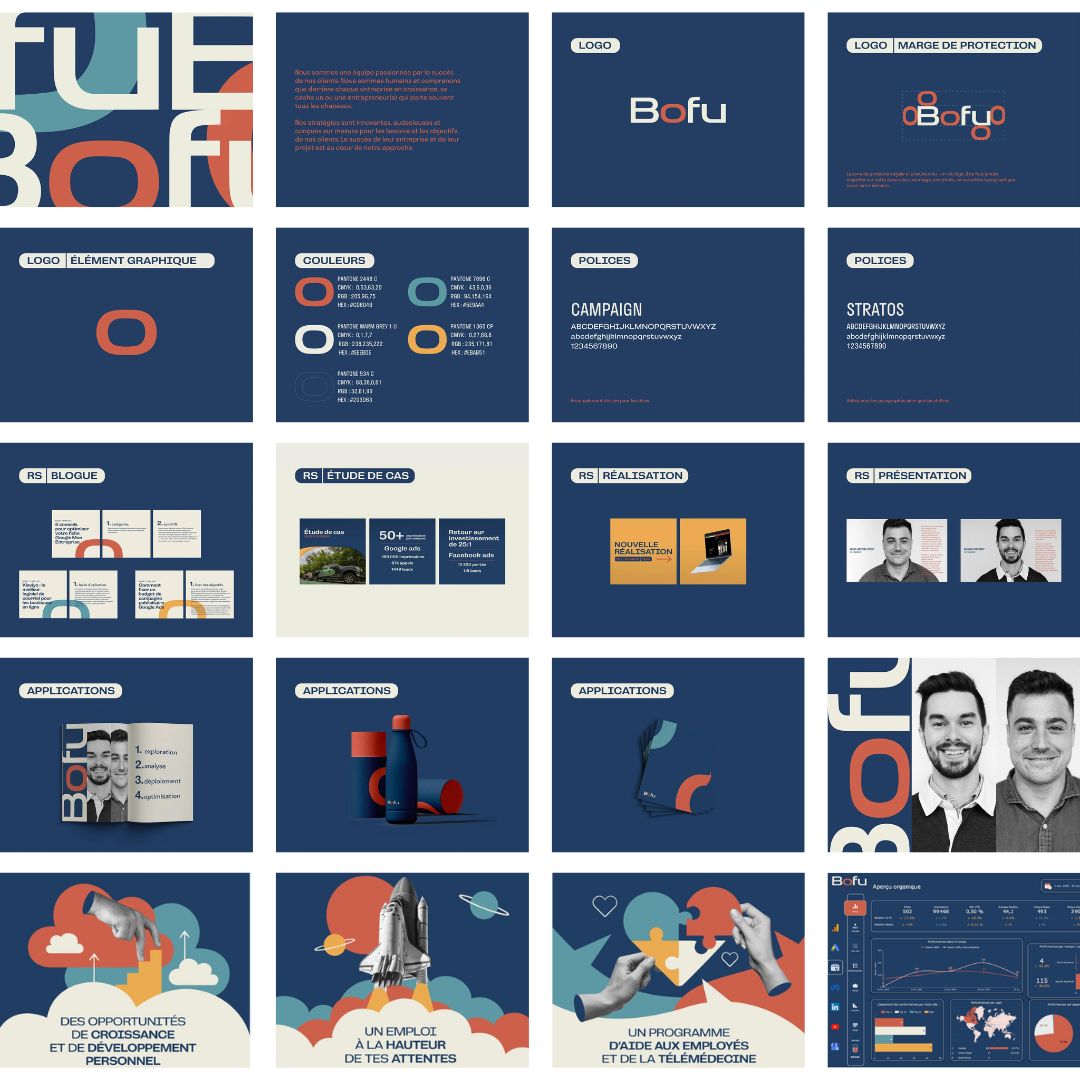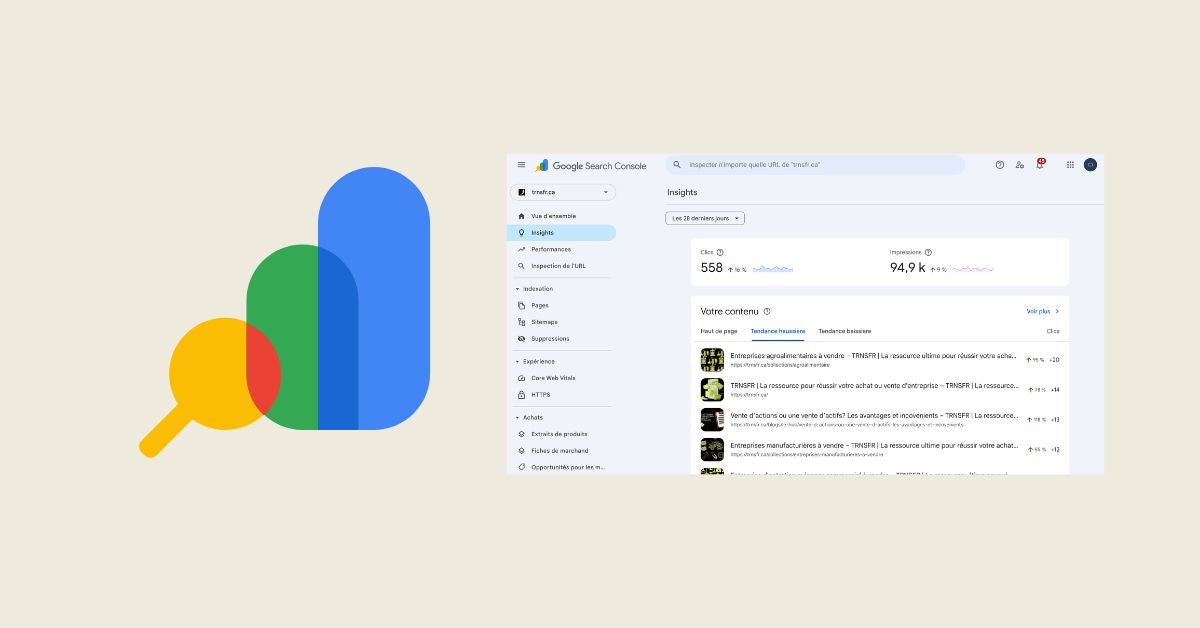In a world where marketing is constantly evolving, some traditional practices remain crucial to a brand's success. Brand redesign is not limited to a new logo or a new graphic charter; it also includes merchandise, printed matter, posters, stationery, and trade show booths. This article offers a comprehensive guide to aligning these traditional elements with a refreshed brand identity.
Rebranding and Merchandising: Strategies and Examples
Merchandise is an essential vector of a brand 's identity. In the redesign process, it is crucial to align derivative products – clothing, accessories, promotional items – with the new brand image . This approach must go beyond simple aesthetic change; it must embody the values, message and spirit of the renewed brand.
Strategies for Merchandise Redesign
-
Design Review : Product design must be reviewed to reflect the new graphic charter, including logos, colors and fonts. For example, a brand adopting a minimalist style in its redesign can opt for clean designs and monochrome colors on its promotional t-shirts and bags.
-
Choice of Materials : The materials used must correspond to the values of the brand. A company positioning itself as eco-friendly could favor recycled or organic materials for its derivative products, reinforcing its commitment to sustainability.
-
Message Consistency : Each item should consistently communicate the brand message. This is crucial to maintaining a strong and unified brand image.
-
An Eco-responsible Fashion Brand : After its redesign, this brand launched a line of clothing made from recycled materials, with labels explaining the ecological origin of the fabrics. The colors and logo reflect the brand's new minimalist and eco-responsible design.
-
An Innovative Technological Company : In its redesign, this company placed emphasis on innovation and modernity. Its derivative products, such as USB drives and caps, feature a futuristic design with reflective elements and geometric patterns, aligned with its brand identity focused on cutting-edge technology.
-
A Health Drinks Brand : After its redesign focused on well-being and health, this brand introduced reusable bottles and sports bags bearing its new logo and the bright colors associated with energy and vitality.
Redesigning merchandise as part of a brand redesign is a strategic process that requires attention and creativity. By closely aligning merchandise with the new brand identity, companies can strengthen their message, values and market presence. This creates a consistent and memorable brand experience for consumers.
The Brand Redesign of Prints, Posters and Stationery: Techniques and Illustrations
As part of a brand redesign , reviewing prints, posters and stationery is essential. These elements often represent the first point of contact with customers and must therefore be in perfect harmony with the new visual identity of the brand. Their design must not only reflect the new visual style, but also effectively convey the spirit and values of the brand.
Redesign Strategies
-
Design Update : The graphic elements of printed matter and stationery must be updated to correspond to the new graphic charter. This includes adjusting logos, selecting new colors and fonts, and creating layouts that reflect the brand's aesthetic.
-
Choice of Fonts and Colors : The fonts and colors chosen should not only be aesthetically pleasing, but also convey the character of the brand. For example, modern fonts and bright colors may suit a young and dynamic brand.
-
Effective Message Communication : Each printed element must clearly convey the brand message. This can include using catchy slogans, explanatory graphics or images that capture the essence of the brand.
Concrete examples
-
A Technology Company : After its redesign, this company revised its brochures and posters to reflect its commitment to innovation. Using clean graphics, futuristic illustrations and bright colors, these materials effectively convey the message of modernity and innovation.
-
A Natural Products Brand : In its redesign, this brand adopted earthy tones and nature images for its prints and stationery. The choice of recycled paper for its brochures and business cards underlines its commitment to sustainability.
-
A Gourmet Restaurant : For its rebranding, this restaurant chose elegant fonts and sober colors for its menus and posters. The high-quality photographs of its dishes reflect the luxury and quality of its offering.
Trade Show Kiosk Rebranding: Strategies and Examples
Presence at trade shows is a vital component of a company's marketing strategy. Trade show booths, as physical representations of the brand, play a crucial role in attracting new customers and partners. An effective brand redesign must therefore include a careful review of these spaces, ensuring that they accurately reflect the new identity and essence of the brand.
Strategies for Kiosk Redesign
-
Integration of Visual Elements : Kiosks must incorporate new brand design elements, such as colors, logos, and fonts. The goal is to create a space that is immediately identifiable as part of the brand.
-
Creating an Immersive Experience : Beyond simple aesthetics, kiosks must offer an immersive experience that engages visitors. This may include the use of interactive technologies, product demonstrations, or sensory elements that capture attention and leave a lasting memory.
-
Consistency with Brand Identity : Every aspect of the kiosk, from product layout to signage, must be consistent with the overall brand identity. This creates a consistent experience for visitors, thereby reinforcing the brand image.
Concrete examples
-
An Innovative Cosmetics Brand : During a beauty salon, this brand presented a kiosk with interactive elements, such as touch screens to virtually test products. The bright colors and modern design of the stand were in perfect harmony with its young and innovative brand image.
-
An Electric Car Manufacturer : At an auto show, this manufacturer designed a sleek booth with charging stations to demonstrate its sustainable energy innovations. The use of recycled materials and green technologies in the construction of the kiosk reinforced its commitment to the environment.
-
A Technology Company : For an electronics trade show, this company created a futuristic booth with live demonstrations and interaction spaces for visitors. The design incorporated the brand's latest innovations, reflecting its positioning as a leader in the technology sector.
Redesigning trade show booths as part of a brand overhaul is an essential step to ensure a cohesive and impactful presentation . By integrating new visual brand elements and creating an immersive and memorable experience, businesses can effectively strengthen their image and attract attention in a competitive environment.
Conclusion: Harmonize Brand Redesign Across All Channels
Rebranding is a complex, multidimensional process that goes far beyond a simple change in logo or color palette. As demonstrated in this article, it encompasses the reinvention and harmonization of various crucial aspects of traditional marketing - from merchandise to print to trade show booths. Each element plays a vital role in communicating the new brand identity and building meaningful connections with audiences.
Merchandise should be redesigned to reflect the brand's values and aesthetic, print and stationery should be updated to effectively convey the brand message, and trade show booths should be designed to create an immersive experience and memorable. Each of these elements, when aligned with the new brand identity, contributes to building a coherent and strong image.
The key to success in this process is consistency and integration. A successful brand redesign isn't just about changing the look of products or marketing materials; it requires strategic thinking about how each aspect of the brand presence can be aligned to tell a cohesive and compelling story. This involves a deep understanding of the brand, its values, its vision and its target audience.
Ultimately, a well-executed brand redesign that incorporates all elements of traditional marketing is a powerful statement of intent. It signals not only an aesthetic change, but also a renewed commitment to the brand's values and goals. It is an opportunity to renew connections with existing audiences and attract new customers, thereby solidifying the brand's position in an ever-changing market.
Transform your online presence with impactful branding. Discover our solutions on the branding page .
















